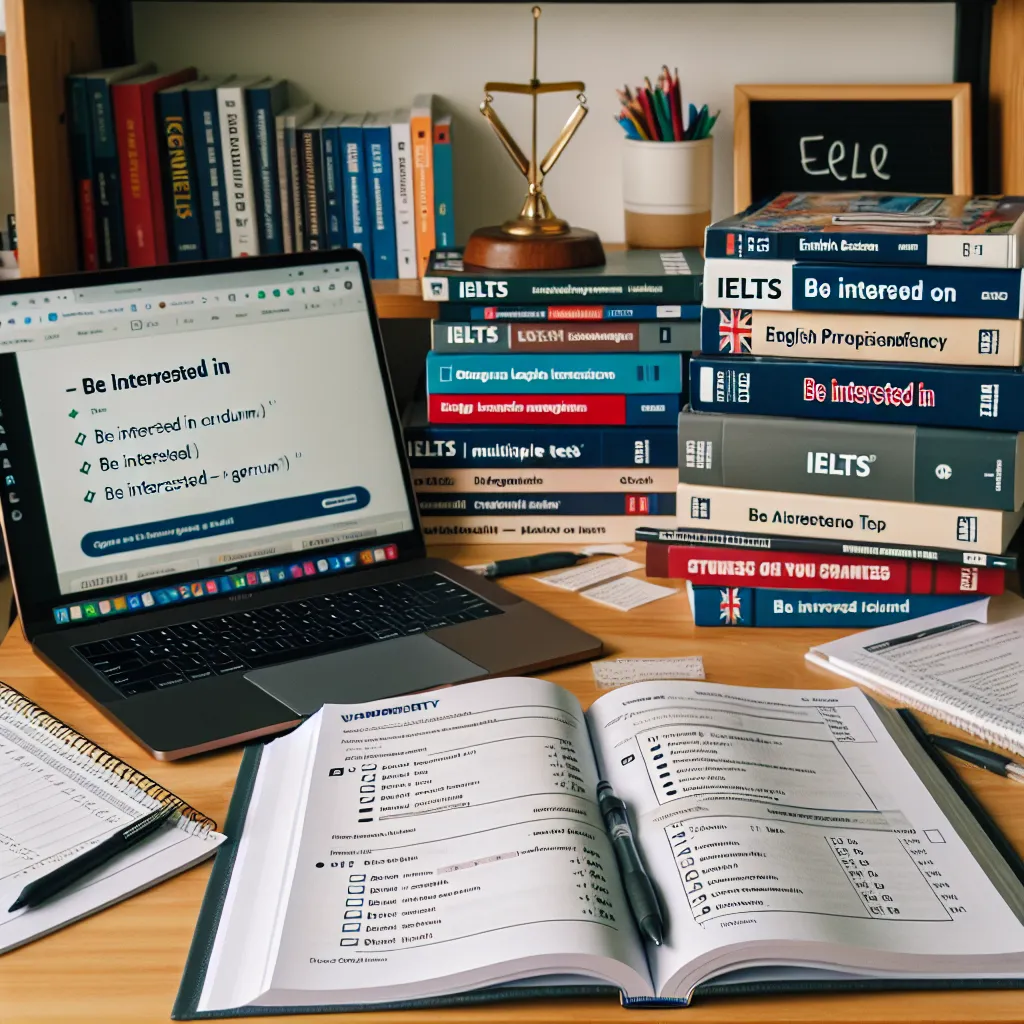Are you preparing for the IELTS exam and looking to enhance your grammar skills? One essential structure you should master is “be interested in + noun/gerund.” This versatile phrase is frequently used in both speaking and writing sections of the IELTS test. Let’s dive into its usage, importance, and how to effectively incorporate it into your IELTS responses.
Nội dung bài viết

Understanding “Be Interested in + Noun/Gerund”
The structure “be interested in” is commonly used to express curiosity, enthusiasm, or engagement with a particular subject or activity. It’s a valuable phrase for IELTS candidates as it allows you to articulate your interests and preferences clearly and precisely.
Grammar Structure:
[Subject] + [be] + interested in + [noun/gerund]
Examples:
- I am interested in environmental science.
- She is interested in learning new languages.
- They are interested in traveling to exotic locations.
- The company is interested in expanding its operations.
- We were interested in attending the conference.
In these examples, you can see how the structure can be used with both nouns (environmental science, new languages) and gerunds (learning, traveling, expanding, attending).
Importance in IELTS
The “be interested in” structure is particularly useful in the IELTS exam for several reasons:
- It helps you express personal preferences and opinions clearly.
- It’s applicable in various topics, from education and work to hobbies and current affairs.
- It demonstrates a good command of English grammar, which can boost your score.
IELTS Speaking Examples
In the speaking test, you might use this structure to answer questions about your hobbies, studies, or career aspirations:
Examiner: “What kind of books do you enjoy reading?”
Candidate: “I am particularly interested in science fiction novels. I find the imaginative worlds and futuristic concepts fascinating.”
Examiner: “Do you have any plans for further education?”
Candidate: “Yes, I am very interested in pursuing a master’s degree in business administration. I believe it will enhance my career prospects.”
IELTS Writing Examples
In writing tasks, this structure can be used to express opinions or describe trends:
Task 2 Essay: “Some people believe that studying abroad is beneficial for students. Do you agree or disagree?”
Sample paragraph: “I strongly agree that studying abroad is advantageous. Many students are interested in experiencing different cultures and educational systems. By living in a foreign country, they not only gain academic knowledge but also develop crucial life skills. Furthermore, employers are often interested in candidates with international experience, as it demonstrates adaptability and cross-cultural competence.”
Task 1 Report: “The graph shows the percentage of people interested in different types of music in a particular city.”
Sample sentence: “According to the chart, young adults aged 18-25 are most interested in pop music, with 65% of this age group expressing a preference for this genre.”
Advanced Usage for Higher Band Scores
To achieve higher band scores in IELTS, it’s crucial to use more sophisticated variations of this structure. Here are some advanced ways to incorporate “be interested in”:
- Use intensifiers: “I am deeply interested in environmental conservation.”
- Add time references: “I have always been interested in ancient history.”
- Combine with other structures: “Not only am I interested in learning French, but I’m also keen on exploring French culture.”
- Use passive voice: “Renewable energy is increasingly being interested in by governments worldwide.”
- Incorporate conditional tenses: “If I had more time, I would be interested in taking up photography as a hobby.”
These variations can help you achieve Band 7 and above by demonstrating a more nuanced and flexible use of the English language.
Common Mistakes to Avoid
When using “be interested in,” IELTS candidates often make the following errors:
- Incorrect preposition: “I am interested on history.” (Correct: I am interested in history.)
- Using the wrong form after “in”: “I am interested in to learn Spanish.” (Correct: I am interested in learning Spanish.)
- Forgetting to use the gerund: “She is interested in travel abroad.” (Correct: She is interested in traveling abroad.)
- Incorrect verb agreement: “They is interested in sports.” (Correct: They are interested in sports.)
- Overusing the structure: Try to vary your language and not rely solely on this phrase.
Conclusion
Mastering the “be interested in + noun/gerund” structure is crucial for IELTS success. It allows you to express your interests and opinions effectively in both speaking and writing tasks. Remember to practice using this structure in various contexts and with different tenses to enhance your fluency and accuracy.
To further improve your IELTS performance, consider exploring related topics such as expressing preferences, discussing hobbies, and describing career aspirations. These areas often require the use of “be interested in” and similar structures.
For more IELTS preparation tips, check out our guides on effective communication strategies and managing test anxiety. Good luck with your IELTS journey!